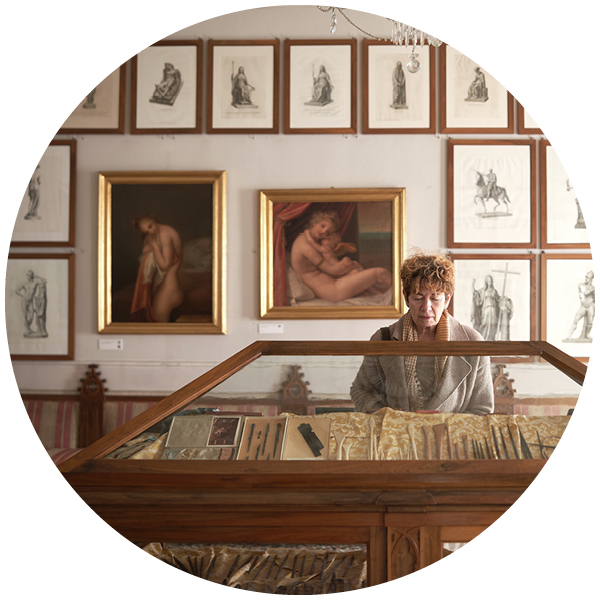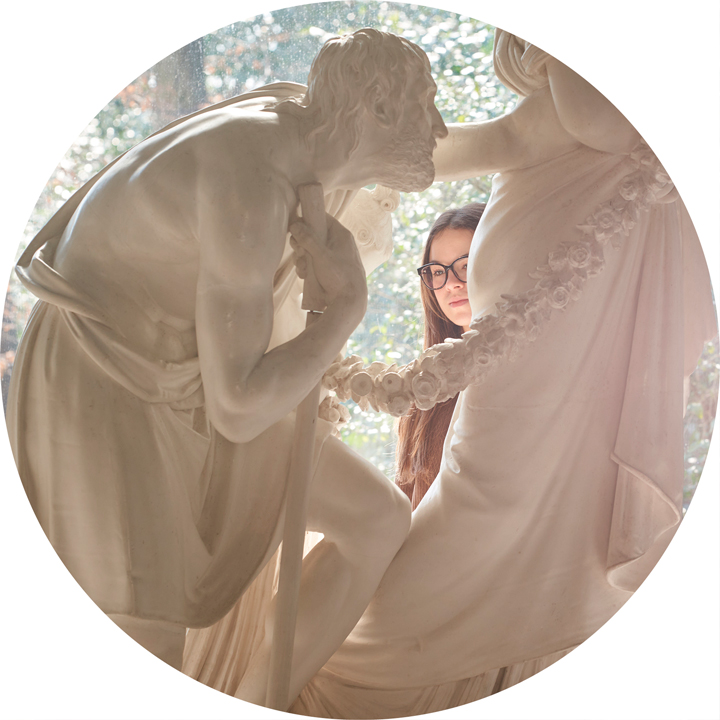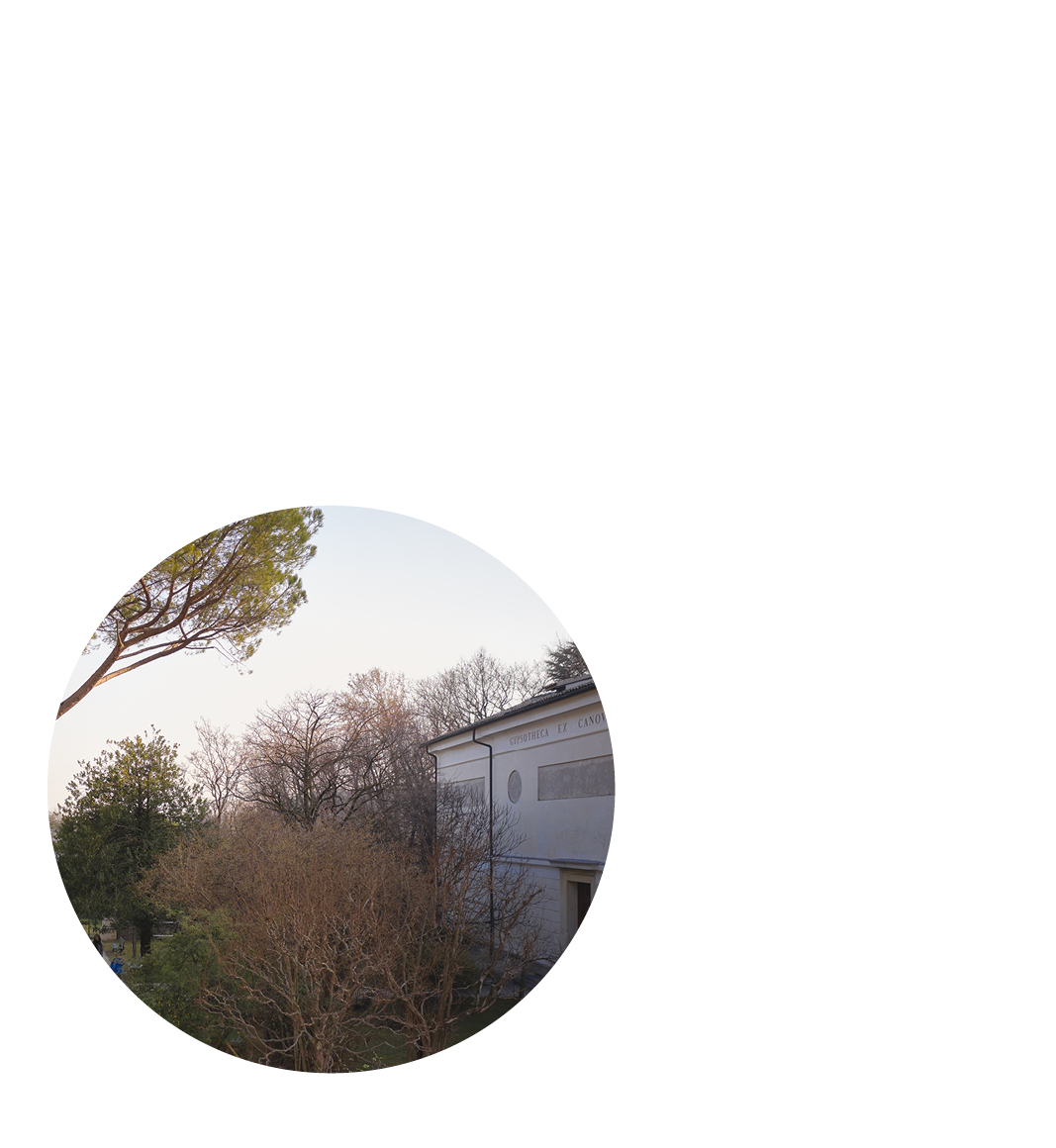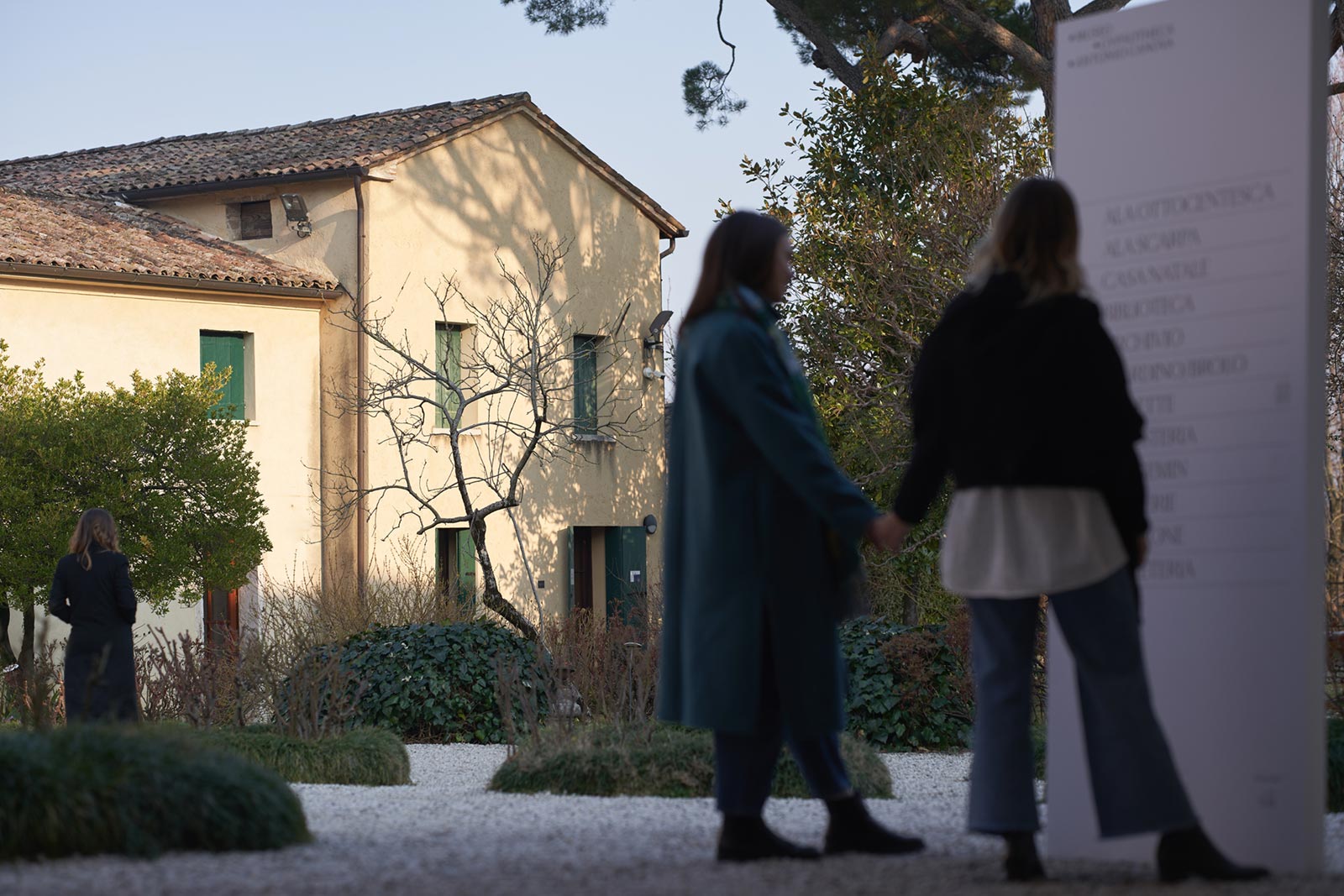“Brolo” and garden
The gardens located in front of the house include a low hedge that defines the path near the main entrance door and some circular rose beds that decorate and color the first part of the garden. Beyond the rose beds, the visitor will find the “Brolo” that takes up the remaining space up to the magnificent wroughted iron gate forged by local artisans and used since the end of the 18th century. The “Brolo”, a typical orchard of Northern Italy, originally served as a place to plant fruit trees and to keep domestic animals. In the Southwestern corner of the garden, in 1799, the artist planted a stone pine that still towers over the rooftops of Possagno.
Views of the garden and of the Museum complex | ph credits Otium/Favotto
Beyond the surrounding walls and the large gate, visitors can catch a sight of the park where Canova’s family harvested the forage for their animals. The artist’s grandfather Pasino, who used to be the owner of the land, sold it to support his talented nephew, who at that time had already moved to Venice. Thanks to this money, Canova could work half-days and spend the rest of his time drawing and studying the collection of plaster models of Greek and Roman sculptures, and the masterpieces that Filippo Farsetti had put together and made available for art lovers. After selling the Statue of Perseus (1801), the artist was then able to repurchase the land and tradition has it that they were named “Persei” fields to commemorate this moment that made it possible.

Gypsotheca
Gypsotheca

The Birthplace
The Birthplace

Library
Library





